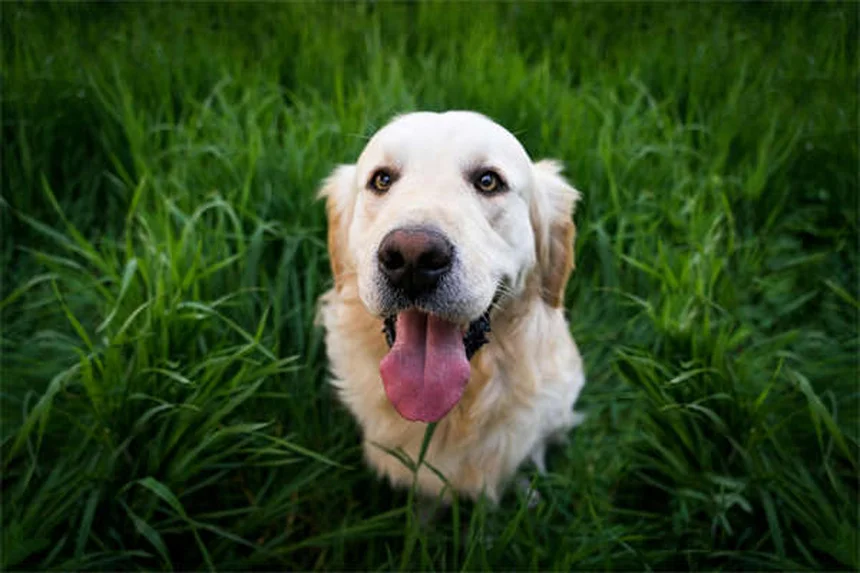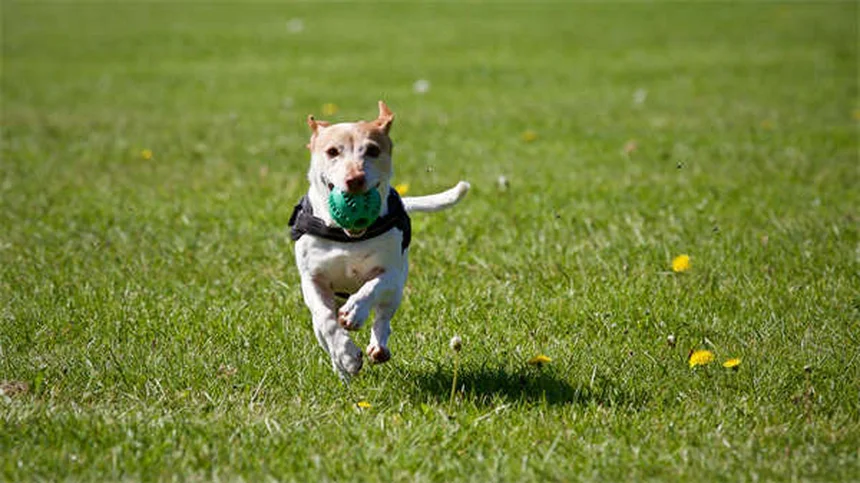Advertisement
Is your chinchilla showing strange neurological symptoms? The answer might be thiamine deficiency. Let me break it down for you - thiamine (vitamin B1) is absolutely crucial for your chinchilla's nerve function and metabolism. Without enough of it, your furry friend can develop serious problems like seizures, paralysis, and even permanent nerve damage.Here's the good news: thiamine deficiency is both treatable and preventable. As a vet who's seen dozens of these cases, I can tell you that catching it early makes all the difference. In this guide, we'll cover everything you need to know - from spotting the first warning signs to creating a thiamine-rich diet that keeps your chinchilla healthy and happy.The most common cause? Poor diet choices. Many owners don't realize that commercial pellets alone often don't provide enough thiamine. Your chinchilla needs fresh leafy greens, high-quality hay, and sometimes supplements to get all the B1 they need. Stick with me, and I'll show you exactly how to prevent this dangerous deficiency before it becomes a problem.
E.g. :5 Essential Hamster Ball Safety Tips Every Pet Owner Must Know
- 1、Thiamine Deficiency in Chinchillas: What You Need to Know
- 2、Other B Vitamin Deficiencies in Chinchillas
- 3、Creating the Perfect Chinchilla Diet
- 4、When to Call the Vet
- 5、Final Thoughts on Chinchilla Nutrition
- 6、Beyond Thiamine: The Bigger Picture of Chinchilla Health
- 7、FAQs
Thiamine Deficiency in Chinchillas: What You Need to Know
Why Thiamine Matters for Your Furry Friend
Let me tell you about vitamin B1 - we call it thiamine in the vet world. This little nutrient is like the spark plug in your chinchilla's engine. Without it, their body can't properly process carbs or make proteins. Imagine trying to bake a cake without flour - that's what it's like for your pet when they're low on thiamine!
Here's the scary part: When chinchillas don't get enough thiamine, their nerves start malfunctioning. The good news? If we catch it early, we can often reverse the damage. Most cases I see come from unbalanced diets - usually when owners don't realize how crucial certain foods are.
Spotting the Warning Signs
Your chinchilla can't tell you when something's wrong, so you need to watch for these red flags:
- Trembling like they're cold (when they're not)
- Circling in one direction constantly
- Violent convulsions that look like seizures
- Complete paralysis in severe cases
Did you know the symptoms often appear suddenly? One day your pet seems fine, the next they're having neurological issues. That's why prevention is so much better than treatment!
 Photos provided by pixabay
Photos provided by pixabay
What Causes This Deficiency?
Nine times out of ten, it's simple - their diet lacks proper thiamine sources. I've seen cases where owners feed only pellets without fresh foods, or use low-quality hay. Here's a quick comparison of good vs bad diets:
| Good Diet | Problem Diet |
|---|---|
| Fresh leafy greens daily | Only commercial pellets |
| High-quality timothy hay | Stale or moldy hay |
| Wheat germ supplements | No vitamin supplements |
How We Diagnose Thiamine Problems
When you bring your chinchilla in, I'll do two main things:
First, I'll observe their symptoms closely. Those neurological signs we talked about? They're pretty distinctive. Second, I'll ask you about their diet history. Be honest - if you've been skipping the veggies, tell me! This isn't about judgment, it's about helping your pet.
Ever wonder why we can't just do a blood test? Well, thiamine levels in blood don't always reflect what's happening in the nervous system. That's why we rely more on symptoms and diet history.
Effective Treatment Options
If your chinchilla has thiamine deficiency, here's what we'll do:
Emergency care: We'll give thiamine injections - these work fast to stop neurological damage. In severe cases, we might use IV fluids with B-complex vitamins.
Home care: You'll need to add thiamine-rich foods to their diet. Think dark leafy greens, fresh hay, and wheat germ. I usually recommend starting with small amounts and gradually increasing.
 Photos provided by pixabay
Photos provided by pixabay
What Causes This Deficiency?
After treatment, you'll want to prevent relapse. Here's my three-step plan:
- Daily fresh veggies - romaine lettuce is a great choice
- Always have clean, high-quality hay available
- Consider a vitamin supplement if your vet recommends it
Remember that time I mentioned baking without flour? Well, maintaining thiamine levels is like keeping your pantry stocked - do it consistently and you'll avoid emergencies!
Prevention Is Easier Than Cure
Want to know the secret to avoiding thiamine problems? It's simple - variety! Just like you wouldn't eat only pizza every day (tempting as that sounds), your chinchilla needs diverse foods.
Here's my golden rule: If their diet would make a nutritionist smile, it's probably good. When in doubt, ask your vet about proper chinchilla nutrition. We love answering these questions!
Other B Vitamin Deficiencies in Chinchillas
Vitamin B12 - The Energy Booster
B12 is another crucial one - it helps make red blood cells. Without it, your chinchilla might become lethargic or anemic. Good sources include high-quality pellets and some fortified foods.
 Photos provided by pixabay
Photos provided by pixabay
What Causes This Deficiency?
This one's rare but serious. Symptoms include diarrhea and skin problems. The fix? Proper diet with varied protein sources.
Creating the Perfect Chinchilla Diet
The 80/20 Rule for Chinchilla Foods
For optimal health, aim for:
80% high-fiber foods (like hay and grasses) and 20% other nutrients (veggies, limited pellets). This balance helps prevent all sorts of deficiencies, not just thiamine problems.
Treats That Actually Help
Instead of sugary treats, try these healthy options that provide B vitamins:
- Small pieces of carrot
- Dandelion greens (pesticide-free!)
- Rose hips
See? Prevention can be delicious too!
When to Call the Vet
Emergency Signs You Should Never Ignore
If you notice any of these, get to the vet immediately:
Neurological symptoms: seizures, head tilting, circling
Severe lethargy: not moving or responding
Loss of appetite: refusing favorite foods
Regular Check-Ups Save Lives
Even if your chinchilla seems healthy, annual check-ups help catch problems early. Think of it like taking your car in for maintenance - much cheaper than waiting for a breakdown!
Final Thoughts on Chinchilla Nutrition
Keeping your chinchilla healthy isn't rocket science, but it does require attention to their dietary needs. With proper thiamine and other B vitamins, your furry friend can live a long, happy life. Remember - when in doubt about their diet, ask your vet. We're here to help!
Beyond Thiamine: The Bigger Picture of Chinchilla Health
The Gut Connection You Might Not Know About
You know what's fascinating? A chinchilla's digestive system is like a finely tuned factory - and thiamine is just one worker in that factory. Their gut bacteria actually produce some B vitamins naturally! But here's the catch - if their diet gets messed up, those helpful bacteria can't do their job properly.
Think about it this way: When you take antibiotics for a cold, sometimes your stomach gets upset because the good bacteria get wiped out too. Same thing happens to chinchillas when their diet lacks variety. That's why suddenly changing foods can cause more problems than just thiamine deficiency - it throws their whole digestive system out of whack!
Environmental Factors That Affect Nutrition
Now here's something most chinchilla owners never consider - temperature affects how their bodies use nutrients. In hot environments, chinchillas actually need more thiamine because their metabolism works harder to stay cool. I've seen cases where perfectly good diets became inadequate just because the room temperature increased!
Let me give you a real example from my practice last summer. A client's chinchilla developed thiamine deficiency symptoms even though the diet hadn't changed. Turns out their AC broke during a heatwave, and the poor little guy was burning through nutrients faster than usual. We fixed it with temporary vitamin supplements and, of course, a repaired AC unit!
The Hidden Danger in "Healthy" Treats
Wait until you hear this one - some foods that seem healthy can actually block thiamine absorption! Raw fish and certain raw vegetables contain enzymes that destroy thiamine. Now, I know what you're thinking - "But I don't feed my chinchilla sushi!"
Here's the twist: Some owners give small amounts of human health foods like raw kale or spinach, thinking they're doing something good. In large quantities, these can interfere with thiamine uptake. The table below shows some surprising thiamine blockers:
| Food Item | Safe Amount | Danger Zone |
|---|---|---|
| Raw Spinach | 1 small leaf weekly | Daily feeding |
| Brussels Sprouts | 1/4 sprout monthly | Weekly feeding |
| Raw Beet Greens | Not recommended | Any amount |
Stress - The Silent Nutrient Thief
Here's a game-changer most folks miss - stress depletes thiamine faster than a bad diet. Loud noises, frequent handling, or even changes in cage location can trigger stress responses that burn through B vitamins. I always tell my clients: "A calm chinchilla is a well-nourished chinchilla."
Want proof? I had two chinchillas from the same litter with identical diets. One lived in a quiet bedroom, the other in a busy family room. Guess which one developed deficiency symptoms first? The stressed-out family room chinchilla needed 30% more thiamine supplements to stay healthy!
Water Quality Matters More Than You Think
Did you know the type of water you provide affects thiamine absorption? Chlorinated tap water can actually break down thiamine in your chinchilla's system over time. I recommend using filtered or bottled water, especially if you notice a strong chlorine smell from your tap.
Here's a quick test you can do at home: Fill a clean glass with tap water and let it sit uncovered for 24 hours. If the chlorine smell disappears, that means the chlorine has evaporated and it's safer for your pet's thiamine levels. Simple, right?
The Supplement Dilemma
Now, I know some of you are thinking: "Why not just give vitamin supplements all the time?" Well, here's the thing - too much thiamine can cause problems too! It can lead to other B vitamin imbalances and even affect kidney function.
My golden rule: Only supplement under veterinary guidance. I've seen more health issues from well-meaning owners over-supplementing than from actual deficiencies. Your chinchilla's body knows how to use nutrients from food much better than synthetic vitamins!
Seasonal Adjustments for Optimal Health
Here's a pro tip most vets won't tell you - chinchilla nutrition needs change with the seasons! In winter, they need more calories to stay warm, which means their thiamine requirements increase too. I recommend adding extra wheat germ or nutritional yeast during cold months.
Summer brings different challenges - increased water intake can flush out water-soluble vitamins faster. That's why I suggest adding more fresh greens (the safe ones we talked about earlier) when temperatures rise. It's all about working with nature's rhythms!
The Aging Chinchilla Factor
As chinchillas get older, their ability to absorb thiamine decreases - just like humans needing reading glasses as they age. Senior chinchillas (over 10 years old) often benefit from slightly modified diets with more easily absorbed nutrients.
What does this look like in practice? More fresh foods instead of dry pellets, softer hay varieties, and sometimes liquid vitamin supplements. The key is making these changes gradually - sudden shifts can do more harm than good for our elderly furry friends!
Breeding Females Have Special Needs
Pregnant and nursing chinchillas have thiamine requirements that would shock you - up to double the normal amount! That's because they're not just nourishing themselves, but also growing babies. I always put breeding females on special diets with vet-approved supplements.
Here's a heartbreaking case that taught me this lesson: A breeder couldn't understand why her healthy female suddenly developed neurological issues after giving birth. Turns out the babies had drained her thiamine reserves completely. Now we know to adjust diets before breeding even begins!
The Myth of "Natural" Diets
Some owners swear by "all-natural" wild diets for chinchillas, but here's the reality - domestic chinchillas aren't wild animals anymore. Centuries of selective breeding have changed their nutritional needs. What works for wild chinchillas in the Andes Mountains won't necessarily keep your pet healthy!
For example, wild chinchillas eat certain mountain grasses that are naturally high in thiamine - grasses that don't grow where most of us live. That's why we need to carefully recreate those nutritional profiles with the foods available to us today.
Your Chinchilla's Unique Needs
Here's something important to remember - just like people, every chinchilla is different! Some metabolize thiamine more efficiently than others. I've had cases where two chinchillas on identical diets showed completely different thiamine levels in tests.
That's why I always tell owners: "Learn your chinchilla's normal." Watch their energy levels, appetite, and behavior closely. You'll be the first to notice if something's off with their nutrition before any serious deficiency develops!
E.g. :Vitamin B Complex Deficiency in Chinchillas | PetMD
FAQs
Q: How quickly can thiamine deficiency develop in chinchillas?
A: Thiamine deficiency can sneak up surprisingly fast! We've seen cases where chinchillas develop severe symptoms within just 2-3 weeks of poor diet. The scary part? Your pet might seem perfectly fine until suddenly they're trembling or circling. That's why we recommend preventive measures rather than waiting for symptoms. Start by adding thiamine-rich foods like romaine lettuce and wheat germ to their daily meals. Remember - it's much easier to maintain healthy levels than to correct a deficiency after nerve damage occurs.
Q: Can I treat thiamine deficiency at home without a vet?
A: While mild cases might improve with dietary changes, I strongly recommend seeing a vet if you suspect thiamine deficiency. Here's why: the neurological symptoms often require immediate thiamine injections to prevent permanent damage. At home, you can certainly prevent deficiency by providing fresh greens and quality hay daily. But if your chinchilla is already showing signs like seizures or paralysis, professional treatment is crucial. We typically use injectable thiamine followed by dietary adjustments for complete recovery.
Q: What are the best natural sources of thiamine for chinchillas?
A: My top three picks for thiamine-rich foods are: 1) Fresh leafy greens (especially romaine and dandelion greens), 2) High-quality timothy hay, and 3) Wheat germ. These provide excellent natural sources of vitamin B1 without the risks of over-supplementation. Pro tip: rotate different greens to provide variety and ensure all nutrient needs are met. Avoid iceberg lettuce though - it's mostly water with little nutritional value. When introducing new foods, go slow to prevent digestive upset.
Q: How long does it take for a chinchilla to recover from thiamine deficiency?
A: Recovery time depends on how severe the deficiency was. With proper treatment, you might see improvement in as little as 24-48 hours for mild cases. More severe neurological damage could take several weeks to fully resolve. The key is consistency - continue the thiamine supplements and dietary changes even after symptoms improve. In my practice, I recommend follow-up visits to monitor progress. Some chinchillas may need lifelong dietary adjustments to prevent recurrence.
Q: Can thiamine deficiency be fatal in chinchillas?
A: Unfortunately, yes. If left untreated, severe thiamine deficiency can lead to irreversible neurological damage or even death. The paralysis and seizures can become life-threatening without prompt treatment. But here's the hopeful part - with early intervention, most chinchillas make complete recoveries. That's why it's so important to recognize the warning signs and act quickly. If your chinchilla shows any unusual behavior or movement issues, don't wait - call your vet immediately. Prevention through proper nutrition is always the best approach.

















